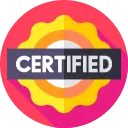FREE
daily Instructor: Dr. Kristen WagnerAbout this Course
Close Quarters Combat Fundamentals
Understanding the Dynamics of CQC
- Analyzing threat assessment in confined spaces, including identifying potential weapons, escape routes, and vulnerable points.
- Defining the reactionary gap and its impact on decision-making and response time. Understanding how to manipulate the reactionary gap to your advantage.
- Learning the principles of controlling distance and managing proximity to minimize threats and maximize offensive opportunities.
- Mastering situational awareness and maintaining a 360-degree view to detect and respond to multiple attackers.
Stance, Movement, and Footwork
- Developing a stable and balanced fighting stance that allows for quick reactions and powerful strikes.
- Implementing footwork patterns for efficient movement, evasion, and closing the distance on an opponent.
- Practicing pivoting, shuffling, and angling techniques to maintain optimal positioning and control the engagement.
- Understanding the importance of maintaining a low center of gravity for stability and power generation.
Striking Techniques
Hand Strikes
- Delivering precise and powerful punches, including jabs, crosses, hooks, and uppercuts, targeting vital areas.
- Executing open-hand strikes, such as palm strikes, hammer fists, and ridge hand strikes, for maximum impact and versatility.
- Utilizing elbow strikes for devastating close-range attacks, focusing on precision and force generation.
- Mastering combinations of punches, open-hand strikes, and elbow strikes for fluid and effective offensive maneuvers.
Kicking Techniques
- Executing front kicks, side kicks, and roundhouse kicks with proper technique and power, targeting vulnerable areas.
- Using knee strikes for devastating close-range attacks, emphasizing precision and force.
- Developing kicking combinations for fluid and effective offensive maneuvers.
- Understanding the trade-offs and risks associated with different kicking techniques in a CQC environment.
Grappling and Clinch Work
Clinch Control
- Establishing and maintaining a dominant clinch position to control an opponent's movement and create opportunities for strikes and takedowns.
- Using underhooks, overhooks, and body locks to control an opponent's upper body and limit their offensive capabilities.
- Employing knee strikes and short punches from the clinch to inflict damage and disrupt an opponent's balance.
- Breaking an opponent's clinch using strikes, movement, and leverage.
Takedowns and Throws
- Executing a variety of takedowns, including single-leg takedowns, double-leg takedowns, and hip throws, to bring an opponent to the ground.
- Controlling an opponent's body weight and momentum to execute throws and sweeps.
- Transitioning smoothly from standing to ground positions while maintaining control and minimizing risk.
- Defending against common takedown attempts, including sprawling, stuffing, and circling.
Ground Fighting and Submissions
- Maintaining dominant positions on the ground, such as mount, side control, and back control.
- Escaping from disadvantageous positions on the ground, such as guard and bottom mount.
- Applying a variety of submissions, including chokes, joint locks, and leg locks, to force an opponent to submit.
- Defending against common submission attempts, including escapes, counters, and positional control.
Weapon Defense and Disarming
Edged Weapon Defense
- Developing awareness of common edged weapon attacks and identifying potential threats.
- Employing evasive footwork and body movement to avoid edged weapon strikes.
- Using blocks, parries, and deflections to intercept edged weapon attacks.
- Executing disarming techniques to remove an edged weapon from an attacker's control.
Firearm Defense
- Identifying different types of firearms and understanding their capabilities.
- Reacting to a firearm threat by moving off the line of fire and creating distance.
- Using cover and concealment to protect oneself from gunfire.
- Employing disarming techniques to remove a firearm from an attacker's control.
Improvised Weapons
- Identifying and utilizing common objects as improvised weapons, such as chairs, bottles, and keys.
- Adapting striking and grappling techniques to maximize the effectiveness of improvised weapons.
- Using improvised weapons for both offensive and defensive purposes.
- Understanding the legal considerations associated with using improvised weapons in self-defense scenarios.
Tactical Considerations
Room Clearing
- Understanding the principles of dynamic entry and room clearing.
- Utilizing pieing techniques to visually assess a room before entry.
- Moving safely and efficiently through a room while maintaining situational awareness.
- Communicating effectively with teammates during a room-clearing operation.
Hostage Rescue
- Prioritizing the safety of the hostage in all actions and decisions.
- Utilizing stealth and surprise to gain a tactical advantage.
- Executing controlled and precise strikes to neutralize threats without harming the hostage.
- Coordinating with teammates to secure the area and provide medical assistance to the hostage.
Multiple Attacker Scenarios
- Maintaining situational awareness to track the movements of multiple attackers.
- Prioritizing threats and focusing on the most immediate danger.
- Using footwork and movement to create space and avoid being surrounded.
- Employing effective striking and grappling techniques to control and neutralize multiple attackers.
Course Features
Honorary Certification
Receive a certificate before completing the course.
Expert Instructor
Get live study sessions from experts
Study Schedule
Plan your learning and get notified when it's time.
Multilingual Support
Learn and take exams in your native language
Pricing Plans
Currency
Sign in to change your currency
I'm not ready to enroll?
Tell us what’s stopping you, because it matters.
External Resources
Discussion Forum
Join the discussion!
No comments yet. Sign in to share your thoughts and connect with fellow learners.
Frequently Asked Questions
For detailed information about our Close Quarters Combat Certification course, including what you’ll learn and course objectives, please visit the "About This Course" section on this page.
The course is online, but you can select Networking Events at enrollment to meet people in person. This feature may not always be available.
We don’t have a physical office because the course is fully online. However, we partner with training providers worldwide to offer in-person sessions. You can arrange this by contacting us first and selecting features like Networking Events or Expert Instructors when enrolling.
Contact us to arrange one.
This course is accredited by Govur University, and we also offer accreditation to organizations and businesses through Govur Accreditation. For more information, visit our Accreditation Page.
Dr. Kristen Wagner is the official representative for the Close Quarters Combat Certification course and is responsible for reviewing and scoring exam submissions. If you'd like guidance from a live instructor, you can select that option during enrollment.
The course doesn't have a fixed duration. It has 28 questions, and each question takes about 5 to 30 minutes to answer. You’ll receive your certificate once you’ve successfully answered most of the questions. Learn more here.
The course is always available, so you can start at any time that works for you!
We partner with various organizations to curate and select the best networking events, webinars, and instructor Q&A sessions throughout the year. You’ll receive more information about these opportunities when you enroll. This feature may not always be available.
You will receive a Certificate of Excellence when you score 75% or higher in the course, showing that you have learned about the course.
An Honorary Certificate allows you to receive a Certificate of Commitment right after enrolling, even if you haven’t finished the course. It’s ideal for busy professionals who need certification quickly but plan to complete the course later.
The price is based on your enrollment duration and selected features. Discounts increase with more days and features. You can also choose from plans for bundled options.
Choose a duration that fits your schedule. You can enroll for up to 6 days at a time.
No, you won't. Once you earn your certificate, you retain access to it and the completed exercises for life, even after your subscription expires. However, to take new exercises, you'll need to re-enroll if your subscription has run out.
To verify a certificate, visit the Verify Certificate page on our website and enter the 12-digit certificate ID. You can then confirm the authenticity of the certificate and review details such as the enrollment date, completed exercises, and their corresponding levels and scores.
Can't find answers to your questions?
How to Get Certified

Complete the Course
Begin the course by selecting your experience level in the course content section:
Beginner: Master the material with interactive questions and enough time.
Intermediate: Get certified faster with hints and balanced questions.
Advanced: Challenge yourself with more questions and less time

Earn Your Certificate
To download and share your certificate, you must achieve a combined score of at least 75% on all questions answered.






